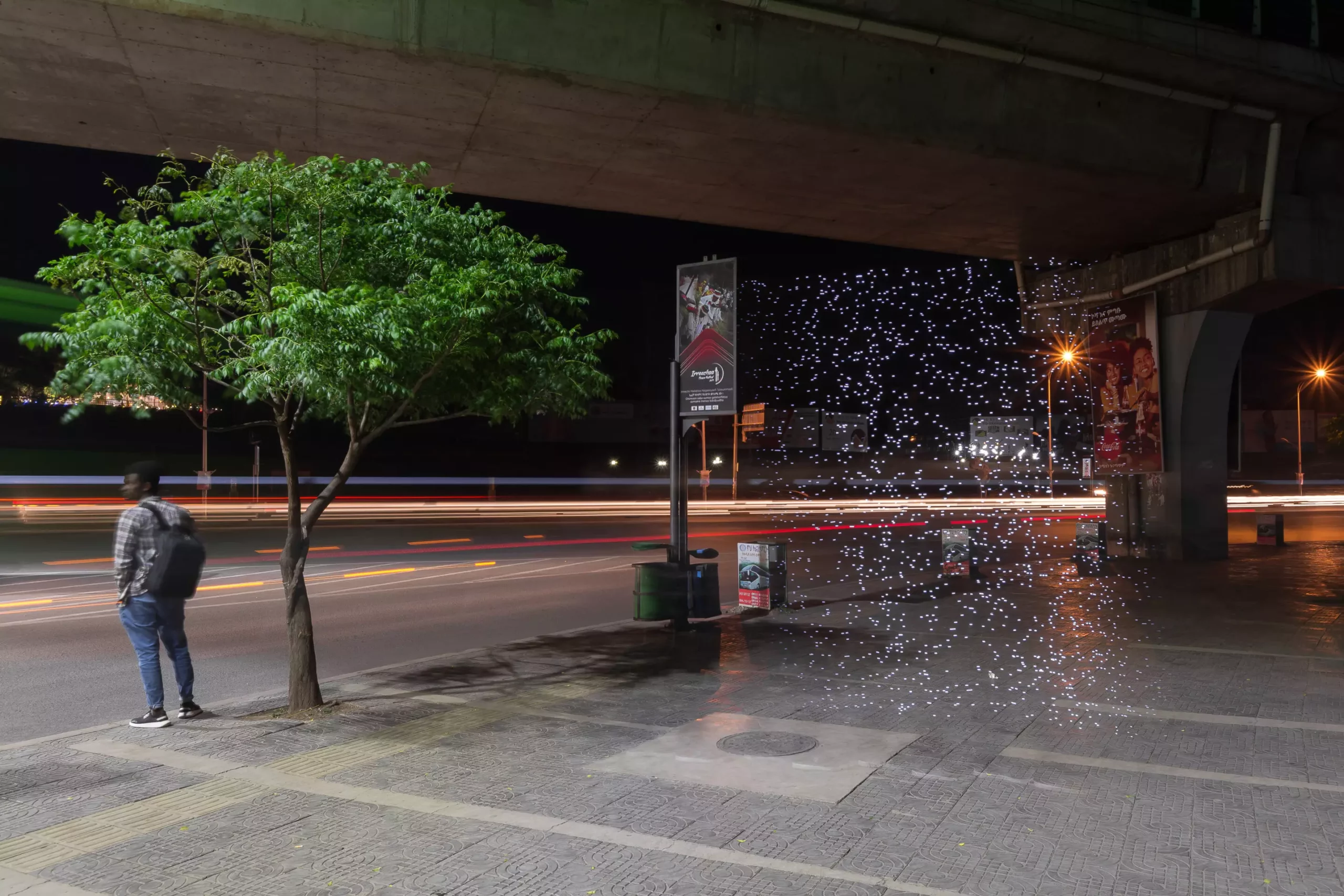The collaboration between researchers and artists has led to a unique project called “Air of the Anthropocene,” where invisible air pollution is made visible through the technique of light painting. This innovative approach utilizes digital light painting and low-cost air pollution sensors to create photographic evidence of pollution levels in cities across Ethiopia, India, and the UK. The results have sparked discussions within local communities and shed light on the health risks associated with air pollution.
In Ethiopia, the team discovered significant variations in air pollution levels, with a kitchen using biomass stoves for food preparation showing PM2.5 concentrations up to 20 times higher than outdoor measurements. Similarly, two children’s playgrounds in India, located 500 km apart, displayed drastic differences in PM2.5 values, highlighting the disparity between urban and rural areas. Additionally, air pollution around the Port Talbot steelworks in Wales showed varying levels, emphasizing the need for continuous monitoring and awareness.
The findings of the international team were published in Communications Earth & Environment, emphasizing the impact of air pollution on global environmental health. The project, spearheaded by artist Robin Price and Professor Francis Pope from the University of Birmingham, aims to educate and engage the public through visually stimulating images that depict the invisible threat of air pollution. By using light painting techniques, the team provides a compelling way for individuals to grasp the severity of air pollution in different contexts.
The team utilized low-cost air pollution sensors to measure PM mass concentrations, linking the sensor data to a moving LED array that flashes faster as pollution levels increase. This unique approach not only captures the attention of the audience but also serves as an accessible method for comparing air pollution levels. Photographer Robin Price highlighted the importance of creating a visual understanding of air pollution that resonates with individuals who may not have a scientific background, emphasizing the significant impact of managing air pollution on daily life.
Through long exposure photography, the team created captivating images where light dots represent varying levels of PM concentration. These photographs serve as catalysts for discussion and reflection on the impact of air pollution on communities worldwide. Professor Pope emphasized the role of art in sparking dialogue and raising awareness about pressing environmental issues, such as air pollution. Co-author Carlo Luiu noted the power of images in evoking emotions and encouraging individuals to take action against air pollution.
The “Air of the Anthropocene” project has been showcased in gallery exhibitions in Los Angeles, Belfast, and Birmingham, reaching a diverse audience and promoting dialogue on environmental conservation. Furthermore, the project has been leveraged by international organizations like the UN International Organization for Migration and UN-Habitat to raise awareness about air pollution in regions like Uganda. As air pollution continues to pose a significant threat to human health and the environment globally, initiatives like these play a crucial role in fostering awareness and encouraging proactive measures to address the issue.
Air pollution remains a critical challenge that requires collective action and awareness. By combining art and science, the “Air of the Anthropocene” project demonstrates the power of visual storytelling in highlighting the detrimental effects of air pollution on communities worldwide. As we strive towards cleaner air and a healthier environment, initiatives like these serve as a reminder of the urgent need to address this pressing issue for the well-being of current and future generations.


Leave a Reply